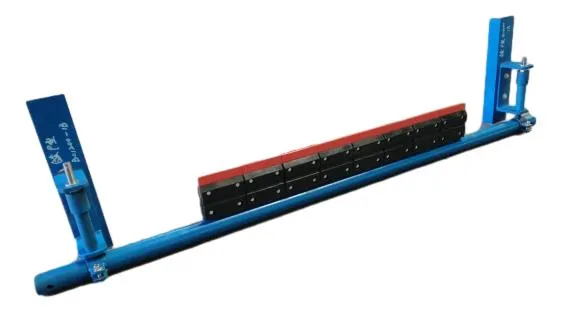 Afrikaans
Afrikaans  Albanian
Albanian  Amharic
Amharic  Arabic
Arabic  Armenian
Armenian  Azerbaijani
Azerbaijani  Basque
Basque  Belarusian
Belarusian  Bengali
Bengali  Bosnian
Bosnian  Bulgarian
Bulgarian  Catalan
Catalan  Cebuano
Cebuano  Corsican
Corsican  Croatian
Croatian  Czech
Czech  Danish
Danish  Dutch
Dutch  English
English  Esperanto
Esperanto  Estonian
Estonian  Finnish
Finnish  French
French  Frisian
Frisian  Galician
Galician  Georgian
Georgian  German
German  Greek
Greek  Gujarati
Gujarati  Haitian Creole
Haitian Creole  hausa
hausa  hawaiian
hawaiian  Hebrew
Hebrew  Hindi
Hindi  Miao
Miao  Hungarian
Hungarian  Icelandic
Icelandic  igbo
igbo  Indonesian
Indonesian  irish
irish  Italian
Italian  Japanese
Japanese  Javanese
Javanese  Kannada
Kannada  kazakh
kazakh  Khmer
Khmer  Rwandese
Rwandese  Korean
Korean  Kurdish
Kurdish  Kyrgyz
Kyrgyz  Lao
Lao  Latin
Latin  Latvian
Latvian  Lithuanian
Lithuanian  Luxembourgish
Luxembourgish  Macedonian
Macedonian  Malgashi
Malgashi  Malay
Malay  Malayalam
Malayalam  Maltese
Maltese  Maori
Maori  Marathi
Marathi  Mongolian
Mongolian  Myanmar
Myanmar  Nepali
Nepali  Norwegian
Norwegian  Norwegian
Norwegian  Occitan
Occitan  Pashto
Pashto  Persian
Persian  Polish
Polish  Portuguese
Portuguese  Punjabi
Punjabi  Romanian
Romanian  Russian
Russian  Samoan
Samoan  Scottish Gaelic
Scottish Gaelic  Serbian
Serbian  Sesotho
Sesotho  Shona
Shona  Sindhi
Sindhi  Sinhala
Sinhala  Slovak
Slovak  Slovenian
Slovenian  Somali
Somali  Spanish
Spanish  Sundanese
Sundanese  Swahili
Swahili  Swedish
Swedish  Tagalog
Tagalog  Tajik
Tajik  Tamil
Tamil  Tatar
Tatar  Telugu
Telugu  Thai
Thai  Turkish
Turkish  Turkmen
Turkmen  Ukrainian
Ukrainian  Urdu
Urdu  Uighur
Uighur  Uzbek
Uzbek  Vietnamese
Vietnamese  Welsh
Welsh  Bantu
Bantu  Yiddish
Yiddish  Yoruba
Yoruba  Zulu
Zulu conveyor pulley specification
Understanding Conveyor Pulley Specifications Key Factors to Consider
Conveyor pulleys play a crucial role in the efficient operation of material handling systems. They are essential components in conveyor belts, serving to drive the belt, redirect the belt path, and provide tension. Understanding conveyor pulley specifications is essential for selecting the right pulley for a specific application. This article delves into the key factors to consider when evaluating conveyor pulley specifications.
1. Type of Pulley
The first step in understanding pulley specifications is recognizing the different types of pulleys available. The most common types include
- Drive Pulleys These are used to transmit power from a motor to the conveyor belt. They are typically larger and more robust than other types of pulleys. - Idler Pulleys Positioned along the conveyor path, idler pulleys support the belt and maintain its tension without transmitting power.
- Return Pulleys These are found at the end of a conveyor system and are designed to redirect the belt as it returns to the starting point.
Selecting the appropriate type of pulley based on its function is essential for optimal performance.
2. Diameter
The diameter of the pulley is another critical specification to consider. The pulley diameter affects both the belt's tension and the overall performance of the conveyor system. Generally, larger diameter pulleys increase the belt lifespan and reduce wear, as they allow for gentler belt bending. However, the diameter must also meet space constraints and the design of the conveyor. Common diameters range from a few inches to several feet, depending on the application.
3. Material
The material of the pulley plays an essential role in its durability and performance. Common materials include
- Steel Steel pulleys are robust and suitable for heavy-duty applications. They can withstand high loads but may be more susceptible to corrosion unless treated.
- Aluminum Lightweight and corrosion-resistant, aluminum pulleys are ideal for applications where weight is a concern, though they may not handle heavy loads as well as steel.
conveyor pulley specification

- Plastic Often used in lighter-duty applications, plastic pulleys are resistant to rust and corrosion but may not be suitable for high-load scenarios.
The choice of material depends on the environmental conditions and operational requirements of the conveyor system.
4. Belt Width and Compatibility
Another crucial specification is the compatibility of the pulley with the conveyor belt itself. The width of the pulley must match or complement the width of the conveyor belt. This ensures uniform tension across the belt and proper functioning. Additionally, pulleys may be designed for certain belt profiles, so it’s important to confirm that the selected pulley matches the specific design requirements of the belt in use.
5. Load Capacity
A pulley’s load capacity indicates how much weight it can effectively handle without failure. It is essential to assess the maximum load that the conveyor will bear during operations to select a pulley that can accommodate it without risking damage or injury. Manufacturers often provide load ratings for their pulleys, which should be carefully matched against the expected operational loads.
6. Shaft Diameter and Length
The shaft diameter and length must correspond to both the pulley size and the overall dimensional constraints of the conveyor system. Choosing the correct shaft size ensures that the pulley fits securely and operates without excessive vibrations. It’s also critical to consider whether the pulley will be driven directly or indirectly, as this affects how power is transmitted through the shaft.
7. End Disc Configuration
Pulley end disc configuration is another specification that can influence performance. This includes considerations such as the number of discs, disc thickness, and how they are attached to the pulley body. Proper end disc configuration ensures that the belt remains properly aligned and minimizes potential slippage during operation.
Conclusion
Understanding conveyor pulley specifications is vital for ensuring the efficient operation of any material handling system. By carefully considering factors like type, diameter, material, compatibility, load capacity, shaft specifications, and end disc configuration, professionals can select pulleys that will enhance the performance and longevity of their conveyor systems. Whether in mining, manufacturing, or distribution, the right conveyor pulley plays a key role in optimizing productivity and operational efficiency.
-
Revolutionizing Conveyor Reliability with Advanced Rubber Lagging PulleysNewsJul.22,2025
-
Powering Precision and Durability with Expert Manufacturers of Conveyor ComponentsNewsJul.22,2025
-
Optimizing Conveyor Systems with Advanced Conveyor AccessoriesNewsJul.22,2025
-
Maximize Conveyor Efficiency with Quality Conveyor Idler PulleysNewsJul.22,2025
-
Future-Proof Your Conveyor System with High-Performance Polyurethane RollerNewsJul.22,2025
-
Driving Efficiency Forward with Quality Idlers and RollersNewsJul.22,2025





























